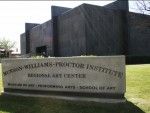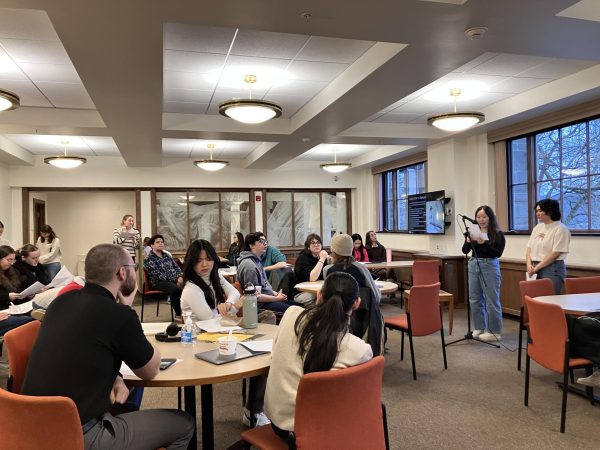Where the Art Is

Since 1919, the Munson-Williams-Proctor Institute, so named after three generations of a Utica, NY family, has proudly supported a world-class museum, an accredited university affiliated with the Pratt Institute and a Performing Arts Division. The various components of M-W-P make this institution not only one of the most important artistic landmarks in the region, but also one with an enduring commitment to the artists working within the region itself. One of the longstanding ways that the M-W-P Institute bears that commitment is through a biannual exhibition of regional artists.
“The Central New York Artists Exhibition at Munson-Williams-Proctor Arts Institute can serve as a meaningful crossroads for artists to cultivate contemporary visual art,” Institute curator Mary Murray said.
On Saturday evening, the opening to the 62nd exhibition revealed just how active that crossroads can be. Just as exciting as navigating the work of thirty-one brilliant artists – who hail from diverse communities within the universities and towns of Upstate New York – was seeing how these artists and their work interact with each another. Take, for instance, the series of Field Studies, drawings of Colgate’s own Professor of Art & Art History and Film & Media Studies, Lynn Schwarzer. Professor Schwarzer’s work, which investigates the ways in which cultures record and transmit knowledge, appropriates drawings from encyclopedias, scientific journals and Internet articles. By transferring these images to a digital file, then reproducing them with fine, white lines in a field of pure black color, she equates these different media outlets, suggesting how precarious the compendia of cultural knowledge is. As a fitting compliment to Professor’s Schwarzer’s work, the photography of Utica native Sylvia de Swaan hangs along the same wall. What her “Sub-version” series emphasizes, through the black-and-white studies of everyday vignettes, is a reconsideration of “individual and collective memory.” In their formal stillness and frank composition, her photographs pair both compositionally and thematically with Field Studies since both series reexamine personal and social relationships with information.
Maintaining the spirit of an artistic crossroads, there were artists whose work cohered in surprising ways. Two standouts among the twenty-nine remaining artists were Daniel Buckingham and Dorene Quinn – both whose pieces were initially compelling because of their sizable or atypical presence. Buckingham’s conceptual work Receiver involves two giant tree limbs, which resemble antlers, converging in a headset that streams a combination of linguistic, industrial and “every day” audio clips. While the main emphasis here is the jumbling of sounds, there is a deliberate way in which Buckingham weds the natural and the mechanic that resonates with Dorene Quinn’s installation Off Road. In replicating in wooden bark, the pattern of dried-mud tire tracks running up the gallery wall, Quinn creates a visually stunning narrative of what she calls “hybrid arrangements of nature and culture.”
Not all the works are quite so large in scale. Take, for example, the assemblage pieces of Dan Baich, which display playful juxtapositions of found objects – a golden figurine, a miniature gramophone, a film strip and a metal coil – within small wooden boxes. Or the unsettling sculptural work of Mara Lefebvre whose series Choking Hazard amasses small plastic babies and puts them in relation to destructive objects, such as electrical cables, commenting on the disastrous consequences of overpopulation. In the video piece Territories, Yvonne Buchannan displays a still-shot black-and-white image of crows in a tree. The entire image is clouded by a transparent grey tone with small light-circles that follow the individual birds, commenting on the intrusive nature of surveillance.
Moving from works of global scope, there are yet others whose pieces are quite personal. In the collage series Autobiography, Mary Gaylord Loy uses reproductions of her own drawings and images that relate to different aspects of her memory, wavering between represented images and abstract forms. Melissa Johnson, whose works are entirely abstract, says that abstraction allows her to construct an individual narrative through the relationship of forms and negative space. Sun Meng, whose Film Theorist at Work is a photographic self-portrait in which she places herself in front of female movie stars, responds to her own perception of identity.
Creating meaningful connections between the works of these talented artists was no small feat, and it was a task that fell to the exhibition’s juror, Susan L. Stoops, curator of contemporary art at the Worcester Art Museum in Massachusetts. Her hope is that visitors, who will meet these artists at the crossroads, will leave “with a more in-depth introduction to some of the region’s most innovative artists, as well as some of the issues being explored today in visual culture.”
Contact Ashley Lazevnick at [email protected].






